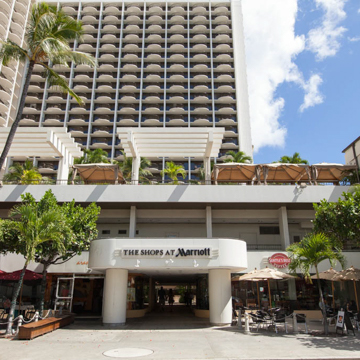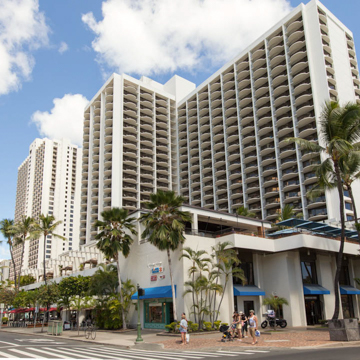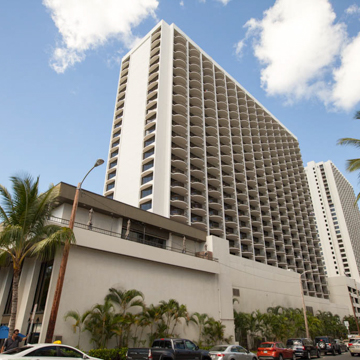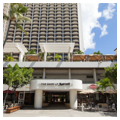You are here
Waikiki Beach Marriott Resort (Hawaiian Regent Hotel)
A sophisticated openness prevails at this resort. Its porte-cochere flows unimpeded by walls into a spacious lobby with equally open adjoining bars, lounges, and cafes. A lushly landscaped courtyard at the makai end of the hotel adds to the blue-sky openness, while the landscaped third-floor terrace with its swimming pool provides further outdoor opportunities. This hotel, Oahu's third largest, covers five acres and houses more than thirteen hundred rooms in two towers: the initial L-shaped Kealohilani and the thirty-three-story Paoakalani (1979). Spacious lanai give each tower a distinctive character and add texture and animation. Marriott assumed control of this property in 2000.
Writing Credits
If SAH Archipedia has been useful to you, please consider supporting it.
SAH Archipedia tells the story of the United States through its buildings, landscapes, and cities. This freely available resource empowers the public with authoritative knowledge that deepens their understanding and appreciation of the built environment. But the Society of Architectural Historians, which created SAH Archipedia with University of Virginia Press, needs your support to maintain the high-caliber research, writing, photography, cartography, editing, design, and programming that make SAH Archipedia a trusted online resource available to all who value the history of place, heritage tourism, and learning.







